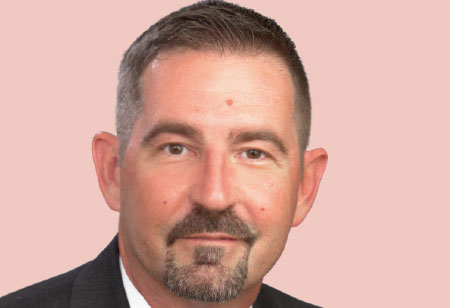Hospitality Bandwith: two lane road or a superhighway?
By Craig Corbin, Director of IT, Fontainebleau

Craig Corbin, Director of IT, Fontainebleau
Hospitality bandwidth is usually a delicate balance of resource conservation and business needs, with the guest experience always pulling between the two. The answer is quite simple: we need more bandwidth.
The challenge, of course, is that a simple answer is not always easy to execute. My goal was to move from my sub 1 Gig ISP to a multiple Gig redundant network ready for anything I could throw at it. I worked through this challenge for just over a year before overcoming all the hurdles. The technology is not the issue. Most of us can source and purchase large pipes. It’s the costs that kill the initiatives. The ability to truly partner with your vendors can turn an impossible vision into a funded project with a delivery date.
"Building a foundation with the acquisition of large pipes has a ripple effect, providing a myriad of options in how we approach other challenges"
To reduce cost, I held countless meetings with vendors advising them of my lofty goals; big pipes at an affordable price. Eventually, I found a partner in Hotwire Communications. They had service in my area and we immediately started the design. We quickly realized that the price per Gig is very attractive on 40 Gbps circuits. As the redundancy design progressed, we discovered that the hotel is right in the center of two independent service loops terminating to different data centers. This gave me the redundancy, size, and the speed I was looking for. In return, my ISP was able to cross-connect their two loops through my property. It was the perfect win-win scenario and needless to say, we signed the deal and I upgraded to dual entry 10 Gig circuits for a total of 20 Gbps. Our bandwidth increased by 2977 percent and my monthly costs decreased by almost 40 percent. We now have hospitality’s largest bandwidth on the nation’s fastest ISP.
We’re all constantly approached with challenges; many are straightforward. We all understand SaaS for standard volume applications. But building a foundation with the acquisition of large pipes has a ripple effect, providing a myriad of options in how we approach other challenges.
Recently, we were working through a dead zone issue with a wireless carrier. They mentioned, reluctantly, the ability to provide LTE hotspots, but that unfortunately all the LTE traffic would have to use our bandwidth. I simply mentioned that we have redundant 10 Gig pipes. When can we start?
At a 1600 room luxury hotel, our guests have high expectations for service levels in all aspects of their stay. This certainly includes bandwidth, where it is very common to have 100 to 1000 Mbps at home. It can be pretty daunting to meet these expectations for thousands of guests at the same time. Borrowing from the ISP’s oversubscription model, we will be able to offer similar bandwidth in either free or paid tiers. This approach will allow for high concurrency video streaming and immersive multimedia campaigns. Video continues to strain most hotels bandwidth and 4K video will only expedite the pressure. I felt it was very important to plan for this now and make a truly unique guest experience today and in the future.
20 Gbps also gives you the ability to consider hosting video security systems or real time disaster recovery environments. Options allow me to be nimble and move at the speed my business needs me to move.
Now that I have a superhighway, there is still work to be done, of course. I’m adding a second ISP to provide additional redundancy a direct request from recent meetings and convention groups. I’m currently in the process of upgrading the aging WiFi to a pervasive WiFi infrastructure that will allow me to move this bandwidth to any area of the hotel and the flexibility to address business requests quickly. I’m adding beacons to the WiFi deployment to prepare to take advantage of applications that would benefit from geolocation data. During my co-location renewal, I’ll evaluate the benefits of splitting hyper converged nodes between the property and my ISP’s data center.
My intention with these infrastructure upgrades is to provide a tool for our Sales and Convention Services departments to market to a wider array of clients.
I’m looking forward to the day I get the following phone call:
Hi Craig, this is “a Fortune 500 Company,” we were considering your hotel as a possible location for a new product launch with live streaming. We have some significant requirements about bandwidth for the event.
Hello, “Fortune 500 Company,” I can offer you up to 10 Gig on redundant ISPs. Welcome to Fontainebleau Miami Beach.




